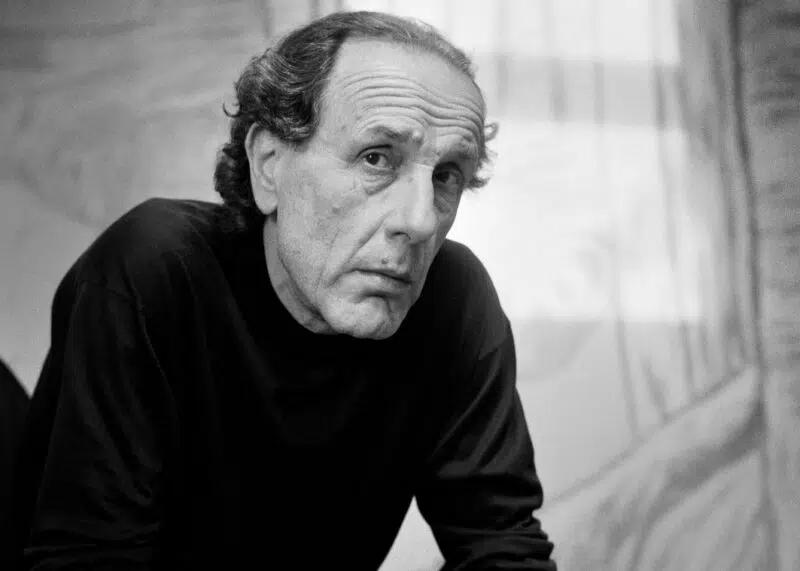Enzo Cucchi was born in Morro d’Alba on 14th November 1949. He approached painting as a self-taught artist for a short time and then lost interest to dedicate to poetry. In the ‘70s he often went to Rome, a place that revived his original interest in pictorial art and artistic activity in general. In the City he met artists like Sandro Chia and Francesco Clemente with whom he worked hard. Even his very early works stood out for their originality, when compared to the main dominant trends in the late ‘70s, but at the same time the artist resorted to the most traditional expressive means of making art. He installed various materials, freely placed in the exhibiting area, but employed as a support for the depicted, drawn or graven image. He exhibited at many Italian galleries, such as Emilio Mazzoli in Modena (from 1979), and Gian Enzo Sperone in Roma and New York (from 1981 to 1985). Along with Sandro Chia, Francesco Clemente, Nicola De Maria and Mimmo Paladino, he was one of the protagonists of the new Italian trend which critic Achille Bonito Oliva called Trans Avant-garde. From the early ‘80s he was acknowledged even abroad as one of the most prominent artists of the new cultural climate which made the return to figuration a distinctive trait of the decade.
His exhibiting activity became intense. Various prestigious museums dedicated personal exhibitions to him for example: Kunsthaus in Zurich (1982 and 1988), Caja de Pensiones in Madrid (1985), Solomon R. Guggenheim Museum in New York and Centre Georges Pompidou in Paris (1986), Lenbachhaus in Munich (1987), Wiener Secession in Vienna (1988), Museo Luigi Pecci in Prato (1989), Galleria Civica di Modena (1990), Kunsthalle in Hamburg, Fundaciò Joan Mirò in Barcelona and Carrè d’Art di Nîmes (1991). Cucchi’s activity went far beyond exhibitions. There were several permanent sculptures outdoors, like the untitled ones in Bruglinger Park in Basel (1984) and at Louisiana Museum of Modern Art in Humlebaek, Copenhagen (1985), or the fountain in the garden at Museum Pecci in Prato (1988) and Fountain of Italy at the entrance of York University in Toronto (1993). He realized various personal exhibitions and took part in collective exhibitions, in the most important exhibiting areas in Italy and abroad like Kunsthalle in Basilea, Solomon R. Guggenheim in New York, Tate Gallery in London, Centre Georges Pompidou in Paris, Castello di Rivoli, Rivoli (To), Palazzo Reale in Milan, Sezon Museum of Art in Tokyo, Academy of France in Rome – Villa Medici, Musèe d’art modern in Saint- Etienne Metropole. He also participated in most significant reviews of contemporary art at an international level, among which International Biennale of Art in Venice, Documenta in Kassel, and Quadriennale of Art in Rome. His works are placed in most museum collections of the world and in the most prestigious private collections. In 2007 Museum Correr in Venice celebrated Enzo Cucchi’s works through a monographic exhibition, which started together with the opening of 52° International Biennial of Art. “To Cucchi painting, sculpture and drawing become the necessary tools to disclose one’s internal self; his images belong to a poetic universe often referring to the popular world and its culture or represent the direct emission of the unconscious. His form of art is rooted in existential memory, but it can involve the public emotionally, no matter what distinct community they belong to. Enzo Cucchi lives in Ancona and Rome, where he had moved after 1984, when his son Alessandro was born so both the city and native land are depicted in his works”.

